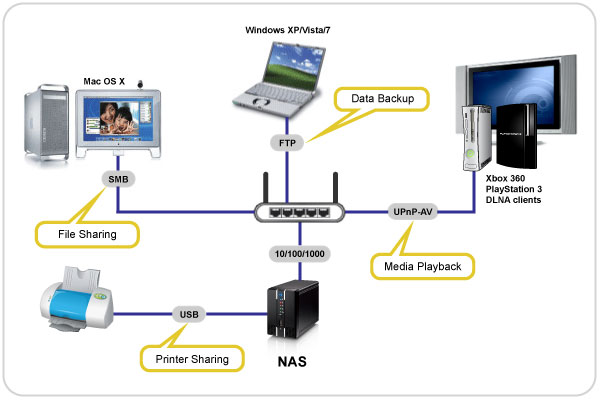
#NAS STORAGE FOR MAC SOFTWARE#
You can use almost any backup software with an NAS device, as long as it supports network volumes. Although you can’t use this type of device for Time Machine backups (which require disks formatted in HFS+), you can still run backups of the home folders on all your Macs. One of the most practical uses for NAS is for backups. '15 GB free' is the primary reason people pick Google Drive over the competition. If you set up port forwarding in your router (FTP generally uses port 21, but you can change this in the NAS device’s configuration see your router’s help for information on port forwarding), you can connect to the device securely from any location using FTP over SSL. Google Drive, pCloud, and iCloud are probably your best bets out of the 12 options considered. This allows you to connect to the NAS when you’re not at home. In addition to sharing files via the Finder, you can also connect to some NAS devices via FTP. If you have a big family or a midsize office, you’re better off with a more powerful NAS unit or a stand-alone server computer that handles file serving. Although the Synology DS107+ can handle 32 concurrent connections, more than a handful of people copying a lot of files simultaneously can slow things down. Also, as with any server, the more users access the device, the slower the access speeds become. It utilizes a multi-hard drive based approach in a server-like housing to store all the necessary files and create a personal ‘cloud’. In most cases, you won’t be copying a lot of files at once (except, perhaps, for your first backup), so this won’t be a problem. NAS has been a storage solution since the 1990s, offering businesses the opportunity to securely share files with their employees without having to store them on the respective machines. With aliases to the server’s folders on your desktop, you can access the folders more quickly.Copying to and from an NAS device is not lightning fast generally, these devices work well with large files, but copying lots of small files can be a drag. If you set a fixed IP address for the NAS device in its network settings, you can make aliases of your folders after you mount them for the first time, and stash them somewhere-the desktop, say-for easy access. If it doesn’t, you can mount the shared folders by typing the IP address of the server (Go: Connect To Server will take you to the correct dialog box), then selecting a folder. Setting up permissions for shared folders is as easy as checking a few boxes.Once you’ve set up the drive, it should appear in the Finder’s list of shared devices (at least under Leopard). You can connect the device directly to your router, to a switch or hub, or even to the Ethernet port of the latest AirPort Express. Whichever NAS device you choose, you connect it via Ethernet (most, but not all, are equipped with Gigabit Ethernet).


#NAS STORAGE FOR MAC MAC#
The Synology is compatible with both Mac and Windows, can use external USB or eSATA disks, automatically backs up to an external disk, can work as an iTunes server, and is accessible via FTP.

For the purposes of this column, I chose Synology’s Disk Station DS107+ and bought a 500GB hard disk to go with it-which provided enough room to back up four Macs and serve up a moderately sized iTunes library.


 0 kommentar(er)
0 kommentar(er)
